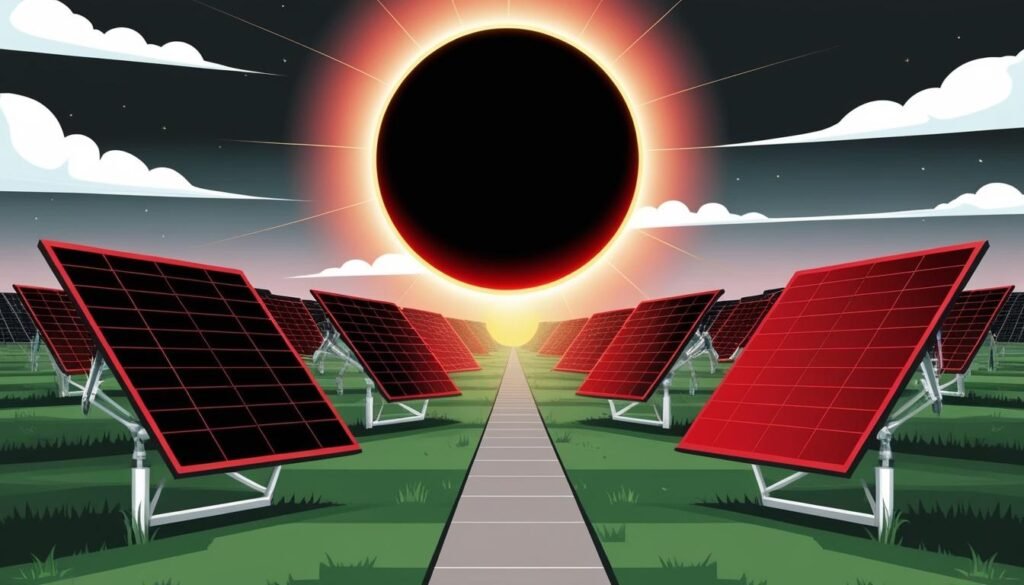A new report reveals significant reductions in solar photovoltaic capacity in the EU, attributing the decline to policy changes and market challenges that could hinder the region’s renewable energy goals.
A recent report from SolarPower Europe (SPE) has revealed a decline in solar photovoltaic (PV) capacity across the European Union, highlighting the complex challenges facing the industry. Following an intensive period of growth that was propelled by the energy crisis, the urgency for citizens to switch to solar energy has diminished as energy bills have normalised. This sentiment was echoed in the EU Market Outlook for Solar Power report, which noted, “Developers face challenges for different reasons. The energy system has not kept up with the solar growth curve, and building bankable utility-scale solar becomes more difficult as grid and flexibility bottlenecks tighten.”
The SPE report indicates a significant reduction in the residential rooftop market, with a nearly 5GW decrease reported for 2023, leading to 12.8GW of expected capacity additions in 2024. The adverse effects of this decrease can be attributed partly to the cessation of certain incentives for rooftop solar. For example, the Netherlands plans to eliminate its net metering scheme by 2027. This withdrawal of support has led to decreases in residential solar installations across multiple countries including Germany, Austria, Italy, Poland, the Netherlands, Belgium, Sweden, Spain, and Hungary. Consequently, the share of residential solar in 2024 has shrunk from 28% in 2023 to 20%.
The largest European markets have not been immune to these trends. Five of the top ten solar markets in 2024, including Spain, Poland, the Netherlands, Austria, and Hungary, have experienced a contraction in solar PV capacity additions compared to the previous year. Notably, the Netherlands reported the most significant drop, with an annual decrease of 1.8GW. Conversely, France saw substantial growth, adding 1.5GW in 2024. Germany remains the largest market within the EU with 16.1GW added in 2024, followed by Spain at 9.3GW and Italy at 6.4GW.
Walburga Hemetsberger, CEO of SolarPower Europe, articulated the implications of the current solar deployment trends, stating, “European policymakers and system operators can consider this year’s report a yellow card. Slowing solar deployment means slowing the continent’s goals on energy security, competitiveness and climate.” The report emphasises the importance of achieving around 70GW of annual solar installations to hit the EU’s targets for 2030. Failure to adhere to this goal could result in a projected shortfall of up to 100GW.
Looking ahead, SPE forecasts modest single-digit growth of between 3-7% from 2025 to 2028. This growth could still allow the EU to achieve its solar PV target of 750GW by the end of the decade, with the report projecting an installed capacity of 816GW. However, the association warns that this path may still be uncertain if current trends continue to develop without significant intervention.
The report identifies various challenges that the solar sector must navigate in the forthcoming years. While the residential market appears poised for further decline, there is growing interest in balcony solar installations. In Germany, over 220,000 small-scale systems were deployed in the first half of 2024. Nevertheless, inflexible European electricity grids and supply limitations are proving to be considerable obstacles for the utility-scale solar sector.
Moreover, the EU’s electrification rate has stagnated at around 22-23% over the past five years, hindering renewable growth in critical sectors such as industry, heating, and transportation. Delays in permitting and land access also continue to impede solar project developments. SPE has called for the simplification of these processes to facilitate utility-scale solar expansion.
Political shifts towards right-wing parties across Europe, often characterised by reduced support for renewable initiatives, present an additional hurdle. Recently, the Italian government implemented a ban on solar installations on agricultural land, a move deemed “illogical” by experts trying to balance agricultural needs with renewable energy expansion.
In light of these findings, SolarPower Europe is urging policymakers to prioritise action in 2025 aimed at enhancing energy system flexibility and promoting electrification. Additionally, the trade association has recommended the formulation of a comprehensive action plan to bolster the inverter manufacturing sector, which currently faces significant pressures. The goal of achieving the initial target of establishing 30GW of domestic solar manufacturing capacity by 2025 is increasingly seen as unlikely given the current circumstances.
Source: Noah Wire Services
- https://solarstoragextra.com/report-solarpower-europe-finds-92-solar-growth-decline/ – Corroborates the 92% solar growth decline from 53% in 2023 to 4% in 2024 and the total EU solar capacity.
- https://www.solarpowereurope.org/press-releases/new-report-european-solar-sector-issues-yellow-card-as-market-data-reveals-92-growth-decline-and-investment-slump – Supports the decline in annual growth, the reduction in residential rooftop market, and the decrease in annual investment in solar installations.
- https://www.solarpowereurope.org/press-releases/new-report-european-solar-sector-issues-yellow-card-as-market-data-reveals-92-growth-decline-and-investment-slump – Details the performance of top solar markets in the EU, including Spain, Poland, Netherlands, Austria, Hungary, Germany, Italy, France, Greece, and Portugal.
- https://solarstoragextra.com/report-solarpower-europe-finds-92-solar-growth-decline/ – Quotes Walburga Hemetsberger, CEO of SolarPower Europe, on the implications of the current solar deployment trends and the need for 70 GW annual installations.
- https://www.solarpowereurope.org/press-releases/new-report-european-solar-sector-issues-yellow-card-as-market-data-reveals-92-growth-decline-and-investment-slump – Forecasts modest single-digit growth from 2025 to 2028 and the projected installed capacity by 2030.
- https://solarstoragextra.com/report-solarpower-europe-finds-92-solar-growth-decline/ – Highlights the challenges faced by the solar sector, including inflexible European electricity grids and supply limitations.
- https://www.solarpowereurope.org/press-releases/new-report-european-solar-sector-issues-yellow-card-as-market-data-reveals-92-growth-decline-and-investment-slump – Mentions the stagnation of the EU’s electrification rate and the impact of delays in permitting and land access on solar project developments.
- https://www.solarpowereurope.org/press-releases/new-report-european-solar-sector-issues-yellow-card-as-market-data-reveals-92-growth-decline-and-investment-slump – Discusses the political shifts and their impact on renewable initiatives, including the Italian government’s ban on solar installations on agricultural land.
- https://solarstoragextra.com/report-solarpower-europe-finds-92-solar-growth-decline/ – Calls for policymakers to prioritize action in 2025 to enhance energy system flexibility and promote electrification.
- https://www.solarpowereurope.org/press-releases/new-report-european-solar-sector-issues-yellow-card-as-market-data-reveals-92-growth-decline-and-investment-slump – Recommends a comprehensive action plan to bolster the inverter manufacturing sector and achieve domestic solar manufacturing capacity targets.
















